Christopher Harding at Aeon Magazine:
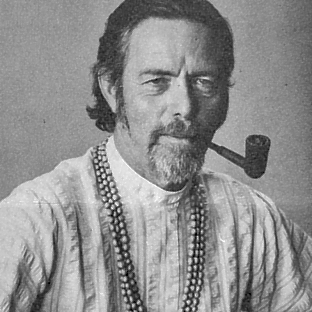 For anyone who has seen or heard Watts at his best – courtesy, perhaps, of his podcast talks – ‘immeasurably alive’ is quite a good description of the man himself. It is easy to see how a basic understanding of God in these terms might have resonated with him. Watts also had moments when the sheer wonder of life around him made it feel as though it was not merely ‘there’, as brute fact, but was being poured out with extraordinary generosity. It seemed ‘given’, convincing Watts that there must be a giver and filling him with the desire to say ‘thank you’. He found backing for all of this in the writings of the 14th-century German theologian Meister Eckhart and the 6th-century Greek author Pseudo-Dionysius the Areopagite. It was there, too, in the ‘I-Thou’ thought of the modern Jewish philosopher Martin Buber.
For anyone who has seen or heard Watts at his best – courtesy, perhaps, of his podcast talks – ‘immeasurably alive’ is quite a good description of the man himself. It is easy to see how a basic understanding of God in these terms might have resonated with him. Watts also had moments when the sheer wonder of life around him made it feel as though it was not merely ‘there’, as brute fact, but was being poured out with extraordinary generosity. It seemed ‘given’, convincing Watts that there must be a giver and filling him with the desire to say ‘thank you’. He found backing for all of this in the writings of the 14th-century German theologian Meister Eckhart and the 6th-century Greek author Pseudo-Dionysius the Areopagite. It was there, too, in the ‘I-Thou’ thought of the modern Jewish philosopher Martin Buber.
more here.

 The air conditioner was malfunctioning. When I bought the car used in January, the owner said she had just fixed it, but here I was on a steamy August day on the Atlantic coast of Senegal, with the vents pouring hot air into the already hot car. So, it was my imminent dehydration talking when I skidded to a stop in front of a roadside fruit seller’s table. I was once told by a grandmother, who lives in my seaside village but grew up in the northern dry regions where the Senegal River winds across a crispy and prickly savanna not far from the great desert, about a watermelon varietal called beref, which is cultivated mostly for its seeds but also serves as a kind of water reserve.
The air conditioner was malfunctioning. When I bought the car used in January, the owner said she had just fixed it, but here I was on a steamy August day on the Atlantic coast of Senegal, with the vents pouring hot air into the already hot car. So, it was my imminent dehydration talking when I skidded to a stop in front of a roadside fruit seller’s table. I was once told by a grandmother, who lives in my seaside village but grew up in the northern dry regions where the Senegal River winds across a crispy and prickly savanna not far from the great desert, about a watermelon varietal called beref, which is cultivated mostly for its seeds but also serves as a kind of water reserve. Why is giving birth so dangerous despite millions of years of evolution?
Why is giving birth so dangerous despite millions of years of evolution? “If China takes Taiwan, they will turn the world off, potentially,” Donald Trump
“If China takes Taiwan, they will turn the world off, potentially,” Donald Trump  DE MONCHAUX
DE MONCHAUX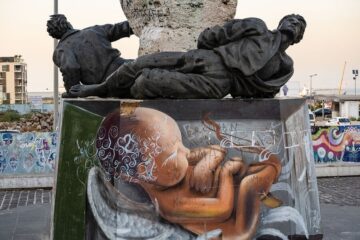 Rarely have so many Lebanese turned out on the streets to demand wholesale political change as when they began their self-declared “October Revolution” of 2019. And rarely has there been so little positive result.
Rarely have so many Lebanese turned out on the streets to demand wholesale political change as when they began their self-declared “October Revolution” of 2019. And rarely has there been so little positive result.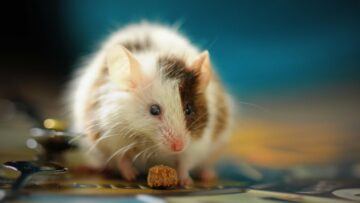 Longevity is complicated
Longevity is complicated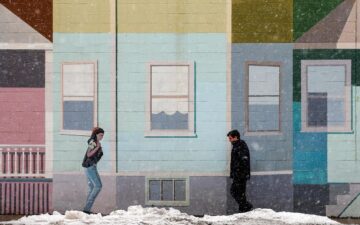 …incoherence can hold between mental states of various types: for example, between beliefs, preferences, intentions, or mixtures of more than one of these types. In all cases, though, it’s crucial that the defect is in the combination of states, not necessarily in any of them taken individually. There’s nothing wrong with preferring chocolate ice cream to vanilla, or preferring vanilla to strawberry, or preferring strawberry to chocolate; but there is something very strange about having all of these preferences together.
…incoherence can hold between mental states of various types: for example, between beliefs, preferences, intentions, or mixtures of more than one of these types. In all cases, though, it’s crucial that the defect is in the combination of states, not necessarily in any of them taken individually. There’s nothing wrong with preferring chocolate ice cream to vanilla, or preferring vanilla to strawberry, or preferring strawberry to chocolate; but there is something very strange about having all of these preferences together. Despite millennia of arguments, the question of whether we have free will or not remains unresolved. Last year October, two neurobiologists stepped into the fray, giving me the chance to dip my toes into the free-will debate. I just reviewed Robert Sapolsky’s
Despite millennia of arguments, the question of whether we have free will or not remains unresolved. Last year October, two neurobiologists stepped into the fray, giving me the chance to dip my toes into the free-will debate. I just reviewed Robert Sapolsky’s 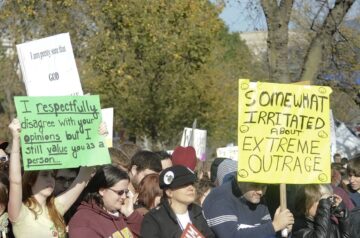 There seem to be two words in the air at the moment, that keep popping up in articles and finding their way into American political discourse. One is “sleepwalking.” The other is “homelessness.”
There seem to be two words in the air at the moment, that keep popping up in articles and finding their way into American political discourse. One is “sleepwalking.” The other is “homelessness.” The prestigious Dana-Farber Cancer Institute (DFCI) in Boston, Massachusetts,
The prestigious Dana-Farber Cancer Institute (DFCI) in Boston, Massachusetts, 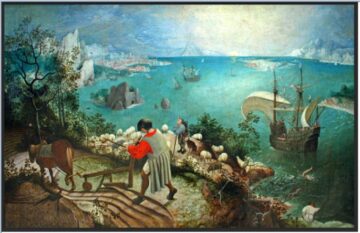
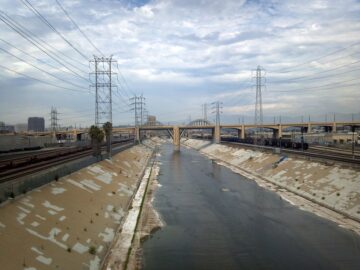 There are many places in L.A. you can go to think about the city, and my own favorite has become the Los Angeles River, which looks like an outsize concrete sewer and is most famous for being forgotten. The L.A. River flows fifty-one miles through the heart of L.A. County. It is enjoying herculean efforts to revitalize it, and yet commuters who have driven over it five days a week for ten years cannot tell you where it is. Along the river, the midpoint lies roughly at the confluence with the Arroyo Seco, near Dodger Stadium downtown. L.A. was founded near here in 1781: this area offers the most reliable aboveground supply of freshwater in the L.A. basin. It’s a miserable spot now, a trash-strewn wasteland of empty lots, steel fences, and railroad tracks beneath a tangle of freeway overpasses: it looks like a Blade Runner set that a crew disassembled and then put back together wrong. It’s not the most scenic spot to visit the river but may be the finest place on the river to think about L.A.
There are many places in L.A. you can go to think about the city, and my own favorite has become the Los Angeles River, which looks like an outsize concrete sewer and is most famous for being forgotten. The L.A. River flows fifty-one miles through the heart of L.A. County. It is enjoying herculean efforts to revitalize it, and yet commuters who have driven over it five days a week for ten years cannot tell you where it is. Along the river, the midpoint lies roughly at the confluence with the Arroyo Seco, near Dodger Stadium downtown. L.A. was founded near here in 1781: this area offers the most reliable aboveground supply of freshwater in the L.A. basin. It’s a miserable spot now, a trash-strewn wasteland of empty lots, steel fences, and railroad tracks beneath a tangle of freeway overpasses: it looks like a Blade Runner set that a crew disassembled and then put back together wrong. It’s not the most scenic spot to visit the river but may be the finest place on the river to think about L.A.